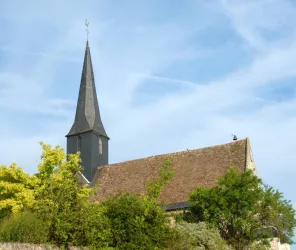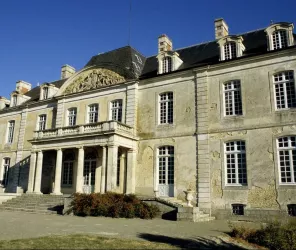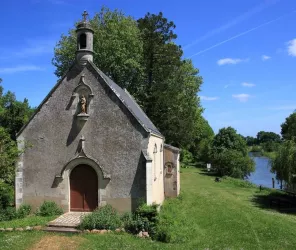Abbaye Royale de l'Épau
Founded in 1230 by Berengaria of Navarre, widow of Richard the Lionheart, it is one of the finest Cistercian jewels in France. It was acquired by the Département de la Sarthe in 1959.
The Abbaye Royale de l'Épau is one of the finest examples of Cistercian architecture in western France.of France.
Founded in 1230 by Queen Berengaria of Navarre, the Abbaye Royale de l'Épau was home to Cistercian monks until the French Revolution. It was then sold as national property, became a laundry and then a farm. Owned by the Conseil départemental de la Sarthe since 1959, the site is currently undergoing a major restoration programme to give it a new lease of life. Listed as a Historic Monument since 1973, this Cistercian abbey is home to a treasure: the recumbent statue of Queen Berengaria. An open cloister leads to the monastic buildings, where the monks used to work and pray. Since the 1970s, the abbey has been the venue for meetings of the Assemblée départementale. Today, it is one of the most important cultural venues in the Sarthe thanks to its rich and varied cultural programme.
Practical information
Opening times
from 01/09/2025 to 18/01/2026
Sunday
from 11:00:00 to 18:00:00
Wednesday
from 11:00:00 to 18:00:00
Thursday
from 11:00:00 to 18:00:00
Friday
from 11:00:00 to 18:00:00
Saturday
from 11:00:00 to 18:00:00
Closing days: Fermé le mardi. Réservé aux groupes et aux scolaires les lundis (hors vacances scolaires Zone B)
Site theme
Abbey
Cloister
Monastery
Site category
Registered and listed sites
Architectural style of the site
Gothic
Medieval
Romanesque
Access map, location
Public transport : 0.5 km
Road (national / local) : 5 km
Motorway : 5 km
SNCF train station : 5 km
Bus station : 5 km
Airport / aerodrome : 10 km
Spoken language
English
French
Facilities
Restaurant
Equipped conference room
Services
Shop
WiFi
Further information
Groups accepted starting from 10 persons
Pets not allowed (Chiens d'accompagnement autorisés)
Visible point of interest without tour
Rates and payment methods
Prices
Full adult price starting from 7€ (+ 2€ lors d’exposition temporaire dans l’abbatiale)
Children's price starting from 5€ (10-17 ans
+ 2€ lors d’exposition temporaire dans l’abbatiale)
Discounted rate starting from 5€ (Demandeur d’emploi, étudiant, RSA, personne en
situation de handicap, accompagnant de personne en situation de handicap, Carte Cezam, CE
+ 2€ lors d’exposition temporaire dans l’abbatiale)
Free of charge (Moins de 10 ans)
Price for subscribers starting from 20€ (Carte Reine Bérengère : accès illimité au site pendant 1 an (hors
concerts Festival de l’Epau), accès aux escales et conférences.)
Group price starting from 5.5€ (à partir de 10 personnes.
Visite guidée en supplément du droit d'entrée : 2€)
Price for large families from 18€ to 22€ (2 adultes + 2 enfants âgés de plus de 10 ans
+ 4€ lors d’exposition temporaire dans l’abbatiale)
Payment methods
Credit card
Cheques and postal orders
Holiday vouchers
Contact Abbaye Royale de l'Épau
For further information, please contact the service provider directly by completing the form below
















